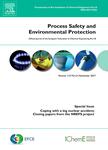版权所有:内蒙古大学图书馆 技术提供:维普资讯• 智图
内蒙古自治区呼和浩特市赛罕区大学西街235号 邮编: 010021

作者机构:Univ Tenaga Nas Inst Sustainable Energy ISE Putrajaya CampusJalan IKRAM UNITEN Kajang 43000 Selangor Malaysia Univ Kebangsaan Malaysia Fuel Cell Inst Bangi Selangor Malaysia Sunway Univ Fac Engn & Technol Res Ctr Carbon Dioxide Capture & Utilisat CCDCU Jalan Univ 5 Petaling Jaya 47500 Selangor Malaysia Univ Malaysia Pahang Al Sultan Abdullah Fac Chem & Proc Engn Technol Kuantan 26300 Pahang Malaysia Univ Kebangsaan Malaysia Fac Engn & Built Environm Dept Chem & Proc Engn Bangi 43650 Selangor Malaysia
出 版 物:《PROCESS SAFETY AND ENVIRONMENTAL PROTECTION》 (Process Saf. Environ. Prot.)
年 卷 期:2025年第199卷
核心收录:
学科分类:0830[工学-环境科学与工程(可授工学、理学、农学学位)] 0817[工学-化学工程与技术] 08[工学]
基 金:Dato' Low Tuck Kwong International Energy Transition Grant [202203004ETG, 202202KETTHA] HICoE grant [2022001HICOE]
主 题:Non-platinum catalysts Cathodic catalysts Carbon supports Polymer supports Oxygen reduction reaction DAFCs Energy technologies
摘 要:Fuel cells contribute greatly to the carbon-neutral recycling of carbon dioxide, relying on green hydrogen generated from renewable electrical energy sources. Direct Alcohol Fuel Cells (DAFCs) have developed into a focal point of research interest due to their remarkable energy conversion efficiency, absence of pollutant emissions, and ease of transport, making them an attractive option for sustainable energy production. This comprehensive review critically evaluates the performance of platinum-free cathodic catalysts in DAFCs, focusing on recent advances and challenges. By exploring alternative catalysts such as palladium-based, gold-based, ruthenium-based, Iridium-based, and transition metal-based catalysts, we aim to enhance the costeffectiveness and accessibility of DAFC technology. The analysis encompasses various factors/parameters influencing cathodic catalyst performance, including synthesis methods, conditions, particle size, crystallinity, and homogeneity. The challenges associated with non-platinum catalysts are discussed, including stability, activity, and cost. Moreover, we highlight the potential of high-performance carbon-based supports such as graphenes, carbon nanofibers (CNFs), carbon nanotubes (CNTs), carbon nitrides, and conductive polymers, along with their surface modifications. Additionally, this review paper summarizes the electrocatalytic efficiency of carbon-based supports containing heteroatom-doped elements (e.g., sulfur, nitrogen, phosphorus, and boron) in DAFCs. We comprehensively overview the latest developments and prospects in non-platinum catalysts and highperformance carbon-based supports for cathodic catalysts in DAFCs. By focusing on these innovations, we seek to contribute significantly to advance sustainable and efficient energy production technologies.